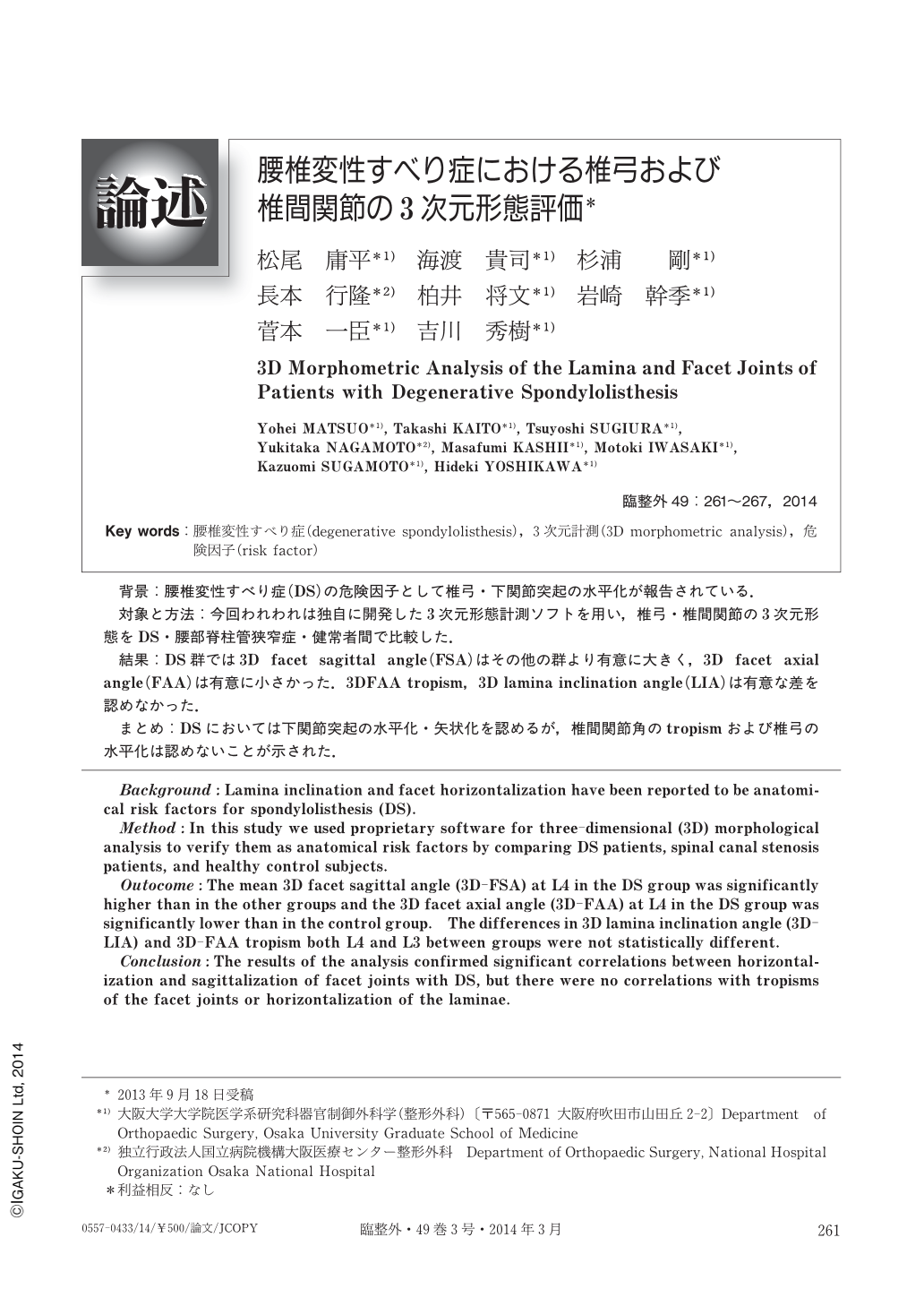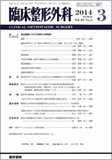Japanese
English
- 有料閲覧
- Abstract 文献概要
- 1ページ目 Look Inside
- 参考文献 Reference
背景:腰椎変性すべり症(DS)の危険因子として椎弓・下関節突起の水平化が報告されている.
対象と方法:今回われわれは独自に開発した3次元形態計測ソフトを用い,椎弓・椎間関節の3次元形態をDS・腰部脊柱管狭窄症・健常者間で比較した.
結果:DS群では3D facet sagittal angle(FSA)はその他の群より有意に大きく,3D facet axial angle(FAA)は有意に小さかった.3DFAA tropism,3D lamina inclination angle(LIA)は有意な差を認めなかった.
まとめ:DSにおいては下関節突起の水平化・矢状化を認めるが,椎間関節角のtropismおよび椎弓の水平化は認めないことが示された.
Background:Lamina inclination and facet horizontalization have been reported to be anatomical risk factors for spondylolisthesis (DS).
Method:In this study we used proprietary software for three-dimensional (3D) morphological analysis to verify them as anatomical risk factors by comparing DS patients, spinal canal stenosis patients, and healthy control subjects.
Outocome:The mean 3D facet sagittal angle (3D-FSA) at L4 in the DS group was significantly higher than in the other groups and the 3D facet axial angle (3D-FAA) at L4 in the DS group was significantly lower than in the control group. The differences in 3D lamina inclination angle (3D-LIA) and 3D-FAA tropism both L4 and L3 between groups were not statistically different.
Conclusion:The results of the analysis confirmed significant correlations between horizontalization and sagittalization of facet joints with DS, but there were no correlations with tropisms of the facet joints or horizontalization of the laminae.

Copyright © 2014, Igaku-Shoin Ltd. All rights reserved.


